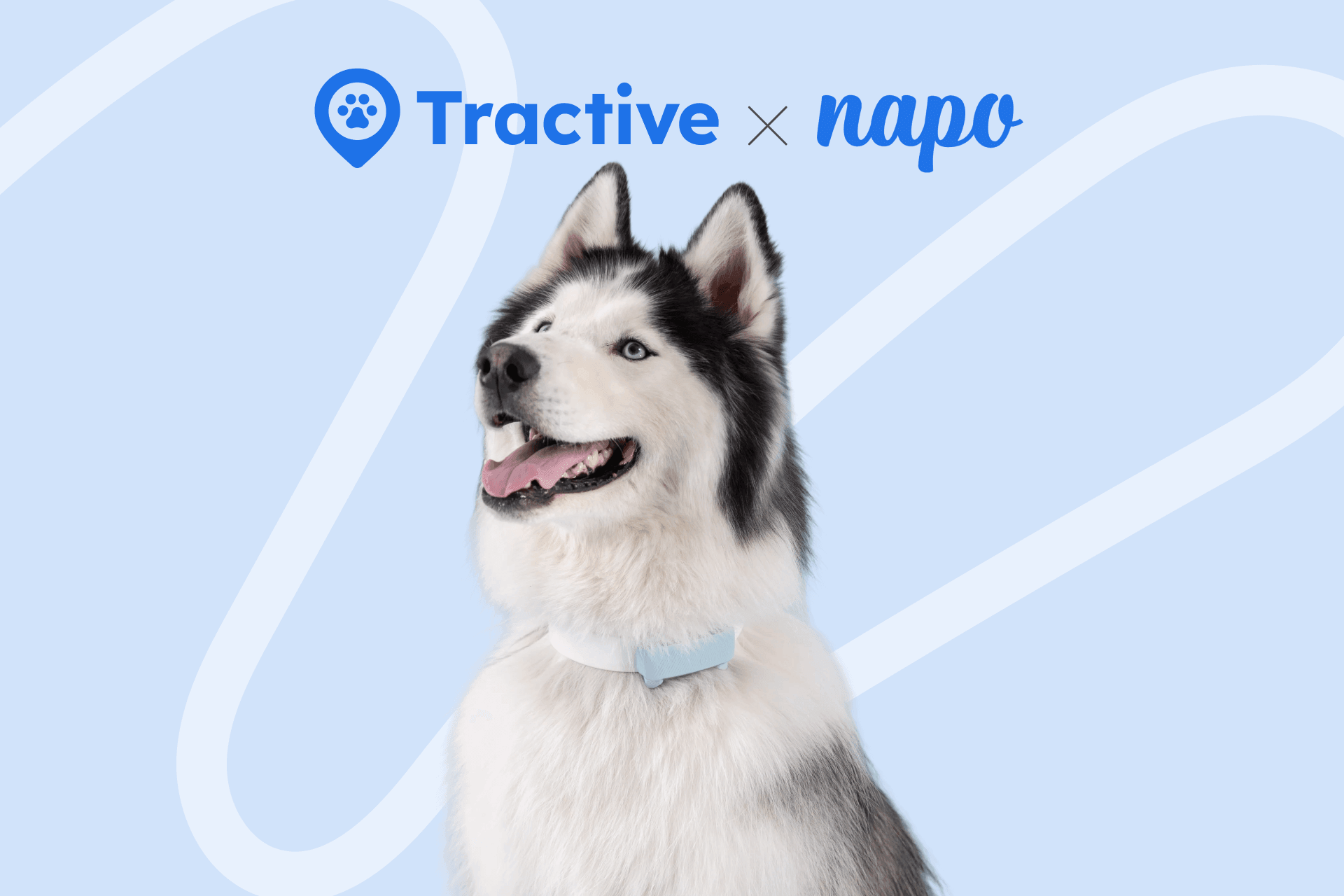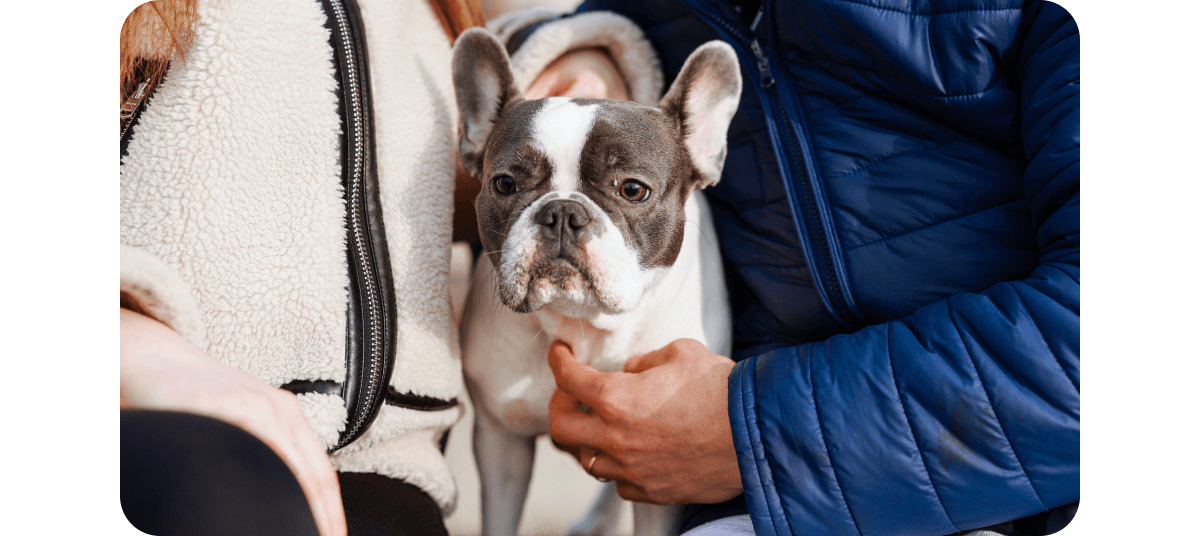How to measure your dog for a muzzle and pick the right muzzle

Summary
The right muzzle for your dog will depend on their breed and snout size. Basket muzzles work for most breeds. But flat-faced breeds like French Bulldogs and Pugs need special short-nose muzzles that don’t make any breathing problems worse.It’s important to pick a muzzle big enough that your dog can still pant, drink, and eat small treats while wearing it. Measure your dog’s snout to get the right-sized muzzle and adjust it so it fits well.
When choosing a muzzle for your dog, one size definitely does not fit all. In this guide, you’ll learn about different types of muzzles for dogs, how to measure a dog for a muzzle, and how to put a muzzle on and adjust it.
Muzzles are a really useful tool for many dogs, not just for aggressive dogs. Some dogs need to be muzzled by law. Others might need one to stop them from eating things they find on the ground during walks. Muzzles can also make visits to the vets or groomers less stressful. And yes, some dogs will wear a muzzle to prevent them from biting themselves, other animals, or people.
So here's our guide to finding the right muzzle for your dog. Once you find the perfect fit, you can start muzzle training your pooch so they're happy to wear a muzzle when they need to.
Choose the right type of muzzle
The best muzzle for your dog depends on their breed, snout shape, and snout size. It also depends on if you want to use a muzzle to stop your dog nipping, or to stop them from finding and eating things they shouldn’t.
Most breeds: basket muzzles
For most dogs, basket muzzles, also called Baskerville muzzles" are the best choice. They come in different materials, like plastic and wire, and work well for lots of different breeds. They're typically the most secure muzzle too, but also usually the most comfortable for your pooch.
Basket muzzles let your dog open their mouth wide enough to yawn, pant, and drink while wearing them. They also have gaps wide enough so you can pass treats through. This means your dog can stay comfortable, be rewarded for good behaviour, and stay hydrated.
That means your dog can wear the muzzle comfortably for longer. Or they can wear them during exercise like during walks and hikes, so they’re great for active dogs.
But basket muzzles won’t work for flat-faced breeds (brachycephalic) like Pugs or French Bulldogs, who don't have much of a snout.
Flat-faced breeds: short-nose muzzles
If you have a brachycephalic (flat-faced) breed like a French Bulldog or Pug, a short-nose or short-snout muzzle will fit them a lot better. These muzzles are specifically made for their unique face structure. Plus, these breeds often find it harder to breathe and the wrong muzzle could make any problems they have worse. Talk to your vet and get their professional advice for the right muzzle that will be safe and comfortable for your flat-faced dog.
Stopping scavenging: anti-scavenging muzzles
Anti-scavenging muzzles are a kinf of basket muzzle that has tighter weave at the end. Your dog can still breathe and pant easily, but can’t pick up and eat things they’re not meant to. (like poo or acorns!) These muzzles can help when training your dog to get out of the habit of picking things up, and stop them eating things they shouldn't.
Avoid fabric muzzles
Soft muzzles or fabric muzzles can be dangerous because they don’t let your dog pant or breathe comfortably. They wrap around your dog's snout and force their mouth closed. This means they can't bark, drink, pant, or eat while wearing the muzzle. We never recommend using a fabric muzzle for your dog.
Choose the material and style
Once you know the type of muzzle you want, the next part is getting the right fit for your dog’s muzzle. A muzzle that fits properly is more comfortable for your pooch. So they won’t try and paw it off, and can wear it for longer. They should be able to yawn, pant, eat treats, and drink with it on. There are three things to think about to help you choose the material and style of muzzle you need.
-
Is it easy to adjust?
-
Is it easy to clean?
-
Is it easy to take off?
1. Is it easy to adjust?
Look for a muzzle with adjustable straps to get a snug and comfortable fit for your dog. Avoid muzzles that are too tight and will be uncomfortable for your dog. Avoid ones that are too loose because your dog may slip out of them or paw it off.
2. Is it easy to clean?
Dog muzzles come in lots of different materials like leather, nylon, rubber, plastic, or wire. Plastic muzzles are popular because they’re easy to clean, sturdy, and lightweight, so they’re comfier for your pooch. Some muzzles also come with soft padding or lining for extra comfort.
3. Is it easy to take off?
If you think you might need to take the muzzle off quickly, think about getting a muzzle with safety buckles. Buckles let you quickly pop off a muzzle, which can be reassuring for you and your dog.
How to measure a dog for a muzzle
Once you know what type of muzzle you need, you’ll have to measure your pooch to get the perfect fit. Each dog’s snout is unique. So you’ll need to measure your dog for their muzzle to make sure it fits comfortably and will work effectively.
-
First, grab asoft measuring tapemeasure or tailor’s tape.
-
Measure your dog’s snout length.Get the length from the tip of their nose to the point just below their eyes.
-
Measure their snout width.Measure around the snout at the widest point, usually just below your dog’s eyes.
-
Using the measurements you took,start shoppingaround. Check out different brands and their sizing guides to find one that’s right for your dog.
-
Choose a muzzle with about1cm of spacebetween the end of the nose and the muzzle so it’s comfortable to wear.
Don't have a tape measure? Hold some string along your dog's snout and mark the end, then measure it from the end of the string to the end to mark. However, this won't be as accurate!
How to put a muzzle on a dog
Once you have the right type of muzzle and the right size, you can start getting your pooch used to wearing their new muzzle. Here’s how to put a muzzle on a dog.
-
Like we recommend in our guide to muzzle training, start by letting your dog put their snout in the muzzle the first few times. You can add a dab of peanut butter or their favourite spread on the inside of their muzzle to get them curious.
-
Start adjusting the straps so they’re snug but not tight. Your dog should still be able to open their mouth. Follow any specific instructions that come with the muzzle you choose. Your dog shouldn’t be able to shake or pull the muzzle off.
-
Once you’ve fitted a muzzle, check that it fits comfortably on your dog. Let them wear it for short periods. Increase their time in the muzzle gradually so they can get used to it. Make sure the muzzle won’t rub or chafe your dog's skin.
-
Watch out for any damage. Keep checking your dog’s muzzle for wear and tear. Make sure it’s clean and your dog hasn’t outgrown it. If you notice something is cracked or ripped, replace the muzzle.
Jump to
Napo & Tractive launch partnership offering pet parents free GPS and health devices

Napo & Tractive launch partnership offering pet parents free GPS and health devices
Blog
Why isn’t my cat using the litter tray?

Why isn’t my cat using the litter tray?
By Rachel Rodgers MSc, Head of Training at Napo Pet Insurance
Blog
10 things you need to know about Frenchies

10 things you need to know about Frenchies
By Rachel Rodgers MSc, Head of Training at Napo Pet Insurance
Blog